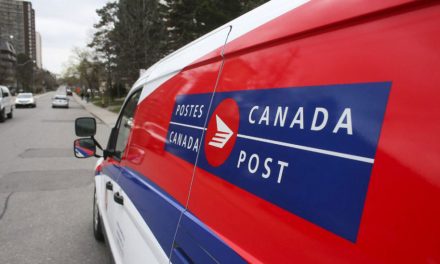
Technology overcomes geography at Canada Post
An insight from David Roy, general manager, Retail, Canada Post Corporation. The RPS Project
Canada Post has successfully completed one of the most sweeping retail technology rollouts in Canadian history.
With its retail point-of-service (RPS) project, Canada Post addressed shortcomings in its retail network, by far the largest and most expansive in Canada, and created a platform that will allow the company to offer new products and services.
The company also overcame the daunting distances, winter weather and inadequate infrastructure that make reaching and serving the smallest and most remote communities of Canada an enormous challenge. Most of Canada’s 34m people live close to its southern border and along its east and west coasts, leaving much of its almost 10m square kilometres sparsely populated.
During 2008 and 2009, working with its technology subsidiary Innovapost and with IBM, Canada Post automated its point-of-sale systems at 3,000 post offices that had been run manually (with cash registers and paper forms). It also upgraded an additional 2,846 dealer and corporate post offices that had been using mid-1990’s technology. In all, about 7,200 new systems were installed in these nearly 6,000 retail outlets between June 2008 and December 2009, impacting 15,000 employees.
Canada Post now has the largest fully automated retail network in Canada. This is more than the number of branches of the country’s top five banks combined.
The C$85m project was completed a year ahead of schedule.
Overcoming the obstacles
That achievement was all the more remarkable given the obstacles project planners and installation technicians faced.
Some post offices in tiny, remote Arctic and sub-Arctic communities had difficulties accessing internet or telephone services. About 200 post offices needed electrical improvements, whilst more than 750 new phone lines had to be installed.
Together with telecommunications giant Bell Canada, project leaders overcame several hurdles to achieve the necessary connectivity for rural and remote sites that were not previously connected to the internet. Wherever possible, connectivity was achieved via dial-up, cellular, DSL or satellite links. On some buildings an antenna had to be erected to boost weak signals.
In unpredictable weather, transporting technicians and equipment to these remote, fly in locations involved the use of float and ski planes and even a helicopter. Bad weather delayed many of the small army of 130 technicians involved. During one blizzard, a technician found impromptu accommodation in a nursing station; and another rented a local’s recreational vehicle during his unplanned “storm stay” !
Automating manual sites in remote locations took well over a year; upgrading a similar number of urban post offices took only five months. By the fall of 2009, the planning and teamwork meant automation could occur at the breakneck speed of 600 post offices a month.
A new platform
Overcoming obstacles is only part of the RPS story. The other part is the benefits it makes possible, today and tomorrow, by providing a platform for crucial revenue growth to help offset declines in Canada Post’s core lettermail business.
Prior to this project, Canada Post’s non-automated post offices had slow, inefficient meters and cash registers. The resulting shortcomings included cash only transactions, inconsistent application of postal rates and poor controls over revenue, inventory and customs.
Furthermore, these manual post offices had no ability to scan products for sale or induction. Manual forms increased training, processing, paperwork and data entry costs. There were also delays in posting delivery information about customers’ parcels due to manual processes. Customers who encountered delays or long queues were frustrated. The same was true for employees whose tedious monthly accounts reconciliation and inventory reports took hours.
The company’s manual processes were subject to compliance issues in respect to new government standards meant to reduce the risk of fraud and money laundering involving money orders. Project leaders had to meet a requirement to bring 95% of all money order transactions online by March 31, 2009.
Customer benefits
Now, because of the RPS deployment, Canada Post’s post offices offer a number of major advantages that customers can see.
Customers make quicker transactions and get consistently accurate pricing. They can pay by debit or credit card. Their parcels can be scanned and tracked. Their change of address can be entered automatically. And they now have access to the MoneyGram service, a high demand option in the many rural or remote communities that have lost, or never had, a branch of a financial institution.
The handheld scanner, high-speed internet connections and display of transaction information to customers on the “3-in-1” Verifone installed at every site are all more versatile and faster tools that convey a more professional and modern image of the post office.
So does the retail counter’s revamped appearance. Canada Post worked with Artitalia Group, a Canadian-based manufacturer, to custom design a new portable workstation for 2,700 locations that were unable to fit the new equipment on their existing counters. This standardisation avoided significant costs that would have been incurred from custom renovations to each site. It also met Canada Post’s desire for the same appealing look and feel at each outlet.
The new portable workstation is ergonomically friendly. Its monitor, for example, is mounted on an adjustable post for comfortable use by staff of different heights, and it was designed for both left and right handed users.
Back office improvements
Thanks to RPS, post offices also enjoy advantages customers do not see. The networked computers provide staff with access to one real time, authoritative source for rates. Cash, revenue and inventory are all controlled automatically, saving costs and time. The new systems use far less energy and paper than the company’s earlier RPS system installed in the mid-1990s. Rural and remote outlets can now deliver sales information to head office and receive real time delivery of inventory and software updates. RPS has ensured that 98% of Canada Post’s retail processes are now handled through automation.
Retail staff were involved in the $15m stage of developing and perfecting the software application, including the touch screen graphical user interface. The user interface was custom developed using C+ and web based technologies to reduce the learning curve and to promote ease of use for postal clerks. Innovapost also ensured that the RPS platform architecture is open and can be readily upgraded to enable the deployment of future Canada Post and third party retail products and services, as can the hardware.
A pre-deployment survey revealed that many older postmasters in rural Canada were not comfortable using computers. The change management challenge was met with a help desk and peer mentors, and a step by step automation guide in addition to computer based training. Dealers particularly appreciate the computer based training as it reduces their costs for training new staff.
Once past the initial stage, postmasters, dealers and postal clerks overwhelmingly offered positive testimonials about the improved system.
“It was like going straight from a stagecoach to a BMW” said Mike LeBrun, a postmaster in a rural farm village in southern Ontario.
Looking to the future
Enhancing the customer experience and reducing the costs of supporting the company’s retail operations are key measures of success for RPS.
Another measure involves looking to the future.
This networked system gives Canada Post the third leg it needs to offer new products and services, many of them digital. Canada Post already had a retail presence like nobody else in the country, thanks to its coast-to-coast-to-coast network of more than 6,000 post offices. It also already enjoyed the trust and respect of Canadians, who named it the country’s Most Iconic Brand in an independent 2009 survey by Brand Finance International.
Now this technology allows Canada Post to leverage its unrivalled physical presence and exemplary consumer goodwill to offer a range of new products and services, including potentially financial, mobility, government and fulfillment services. These services are currently in development with launch plans targeted as early as the fourth quarter of this year.
On a given day in future, thanks to this technology, a customer could walk into any post office in Canada and verify a passport application; be issued a hunting permit; buy a mobile phone, coverage plan and ringtones; reset the PIN for his or her credit and debit cards; pay utility or other third-party bills electronically; and reload a retailer gift card.
It is no wonder that a number of other postal organisations have expressed interest in licensing Canada Post’s RPS technology.
Of course, that same customer will be buying stamps, too. But as Canada Post, like other posts, adapts to the gradual and inexorable decline in core mail volumes, the RPS project will take on added significance.
Concluding thoughts
Together with the C$2bn modernisation underway to sequence mail in major plants, to motorise much of the company’s delivery system and to replace or upgrade obsolete equipment, systems and facilities, Canada Post’s automated post offices will be a key asset of the Modern Post we are creating.
With these automated post offices, Canada Post will be able to seize opportunities to grow, to diversify its products, services and sources of revenue, and to retain and attract retail traffic.
RPS, then, is an example of what modern posts are doing the world over: reinventing to stay relevant.
This article was published in September 2010’s Mail & Express Review. To subscribe to the industry’s leading quarterly publication, please click here









